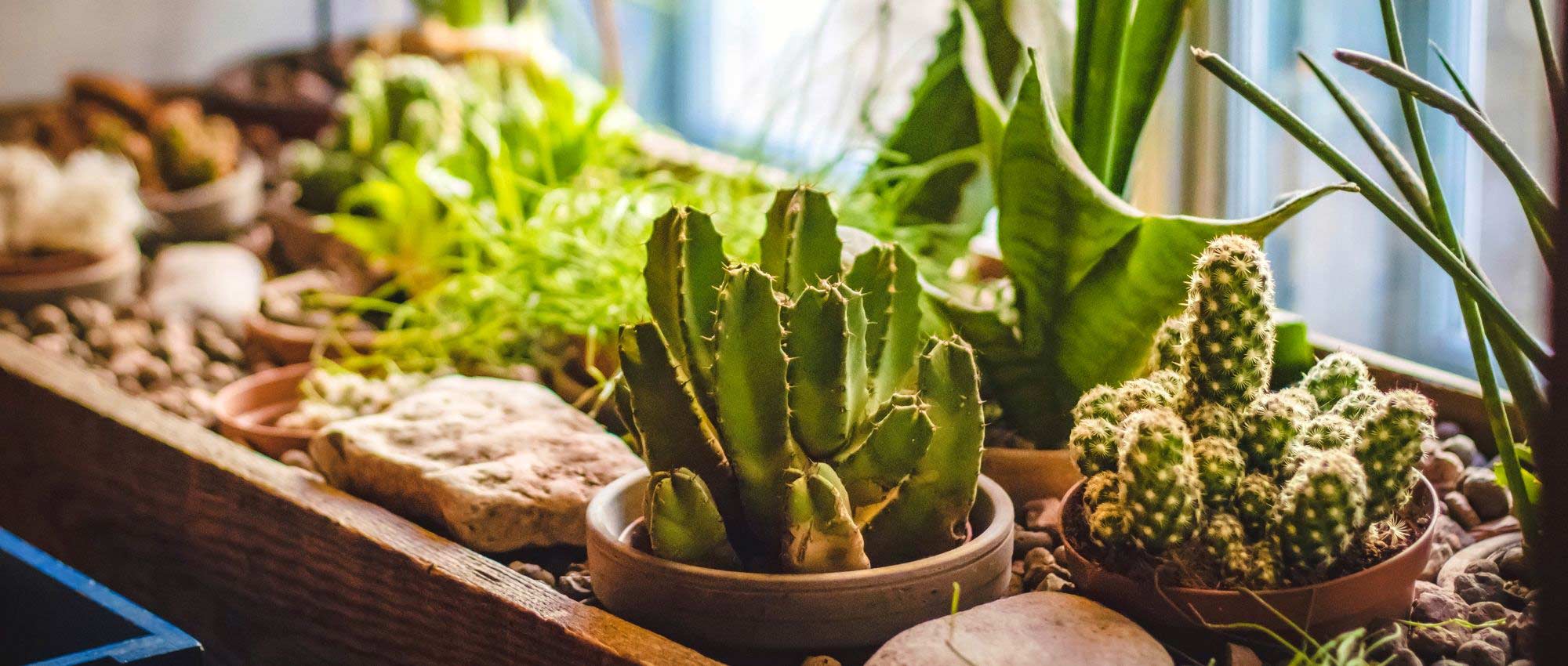
How to water a cactus?
What frequency and how to do it? our tips!
Contents
Cacti and succulents being regarded as very hardy plants, they are often neglected and watering is overlooked, yet they still need water! Although they tolerate lack of moisture better than excess, to keep cacti looking their best and to see them flower, watering must not be neglected! They do need occasional watering to be able to resist drought and to store water in their tissues. However, cacti dislike stagnant moisture: grow them in a free-draining substrate, and place a drainage layer at bottom of pot (clay balls, gravel…). You can also place small gravel or coarse sand on surface of substrate to keep cactus clear of moisture. Also avoid putting cactus pots into decorative outer pots (cache-pots), as this creates a humid atmosphere around roots, and cache-pots prevent seeing whether water remains at bottom. Simply place a saucer under the pot. That will make watering easier to manage! After taking these precautions, discover all our tips for watering your cacti according to their needs.
When should cacti be watered and at what frequency?
Water them regularly throughout the growth period, from spring to autumn. In summer, you can water once a week. However, during very hot spells it is preferable to stop watering as well, because some cacti then enter dormancy. In general, always wait until the substrate has completely dried out before watering again.
In autumn, gradually space out watering, then stop it altogether, as cacti dislike winter moisture. Resume watering very gradually in spring, otherwise the epidermis could crack.
In general, you can water once every two weeks in spring and autumn, and once a week in summer.
The higher the temperature in which you grow your cactus, the more frequent watering should be. A cactus grown in a greenhouse or conservatory will need watering more often than if you keep it indoors.
However, some cacti (notably Epiphyllum) and succulents (Crassula, Aeonium, some Euphorbia species…) continue growth in winter, so you should continue to water them from time to time (about once a month). Observe your plants to see whether they are in dormancy, and find out about the growing requirements of the species you cultivate.
If you have recently planted or repotted your cacti and succulents, wait at least 15 days before watering to allow any damaged roots to heal. Otherwise, they may rot.
If your cacti are planted in the ground, they generally do not need watering. We recommend sheltering them from rain during winter by installing a small removable structure above them. You can also place them beneath an overhanging roof so they do not receive rain.
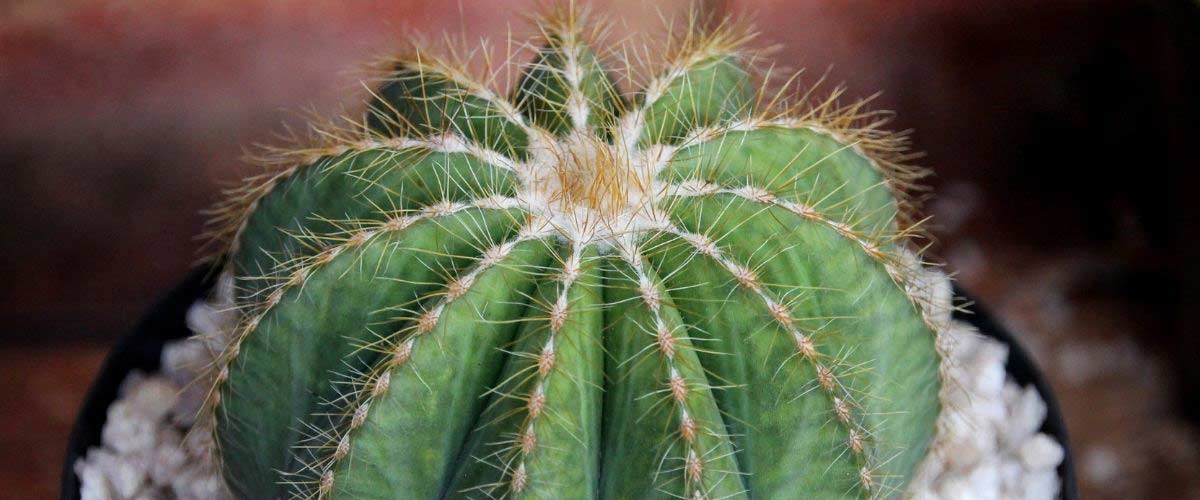
How should they be watered and how much water should be given?
Preferably water cacti with rainwater. If unavailable, tap water will also do, provided it is not too hard. Cacti do prefer slightly acidic pH. You can neutralise lime by diluting a few drops of white vinegar in watering water, or use demineralised water. We also recommend using water at room temperature.
Give generous waterings so entire substrate is moist (better to water heavily now and then than to water lightly and frequently). When watering, direct jet towards substrate, avoiding wetting cactus stem and thorns. Water slowly and gradually until saucer fills with water. Then empty it, because water must not stagnate, so substrate can dry quickly. Ensure it is completely dry before watering again.
You can also bottom-water, by pouring water into a bowl or saucer, then letting pot soak. When whole substrate is moist, remove pot and let it drain.
Similarly, from spring to autumn, we recommend adding a liquid fertiliser once a month, diluting it in watering water. Preferably choose a special cactus fertiliser, low in nitrogen. Failing that, a fertiliser for geraniums and flowering plants will also do.
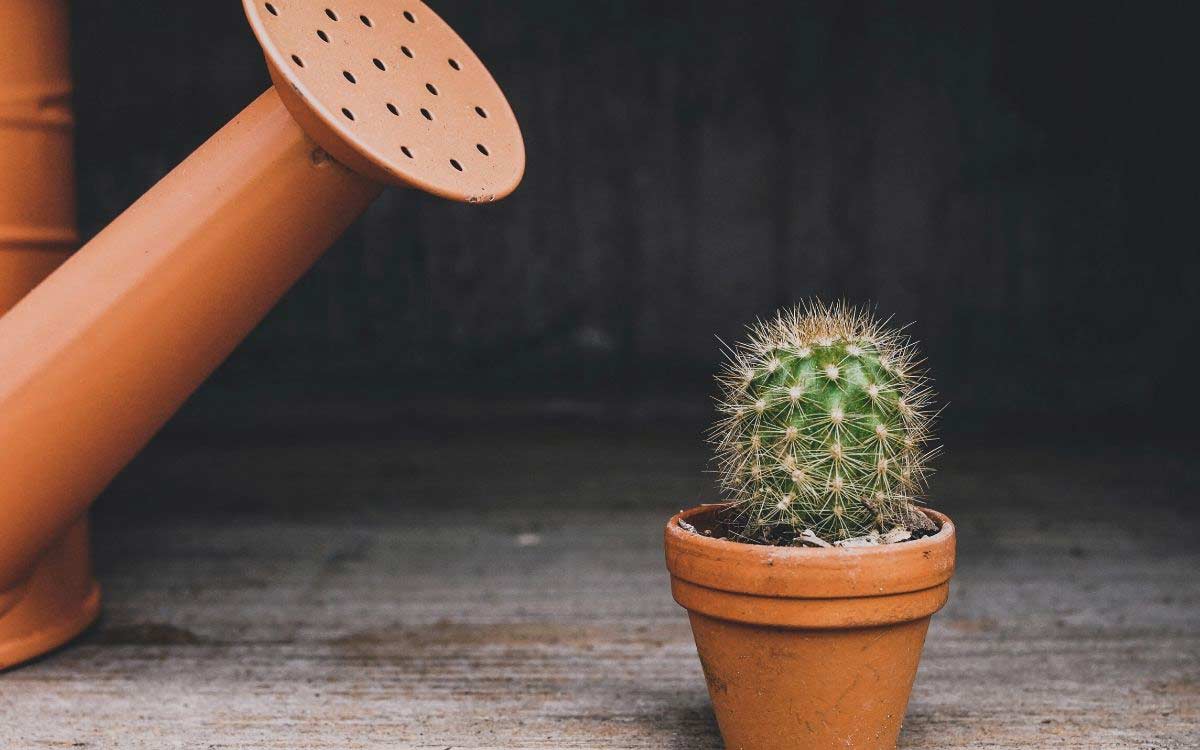
Discover other Watering cans
View all →Available in 0 sizes
Available in 1 sizes
Available in 1 sizes
Available in 1 sizes
Available in 1 sizes
Available in 1 sizes
Available in 1 sizes
Available in 1 sizes
Available in 2 sizes
Available in 1 sizes
How to tell if a cactus is suffering from too much water?
When overwatered, cacti often rot. Likewise, a succulent plant whose leaves become soft and yellow is probably suffering from excess moisture. An overwatered cactus or succulent plant may also develop brown spots caused by a fungus that rots the plant.
Is it possible to save an overwatered cactus? and how?
First, let substrate dry out and remember to empty the saucer. If your cactus has started to rot, the best thing to do is cut away affected parts with a disinfected knife, then apply charcoal powder to the wound to prevent disease developing.
If your cactus or succulent is more severely affected, we recommend propagating it by taking healthy cuttings.
- Subscribe!
- Contents
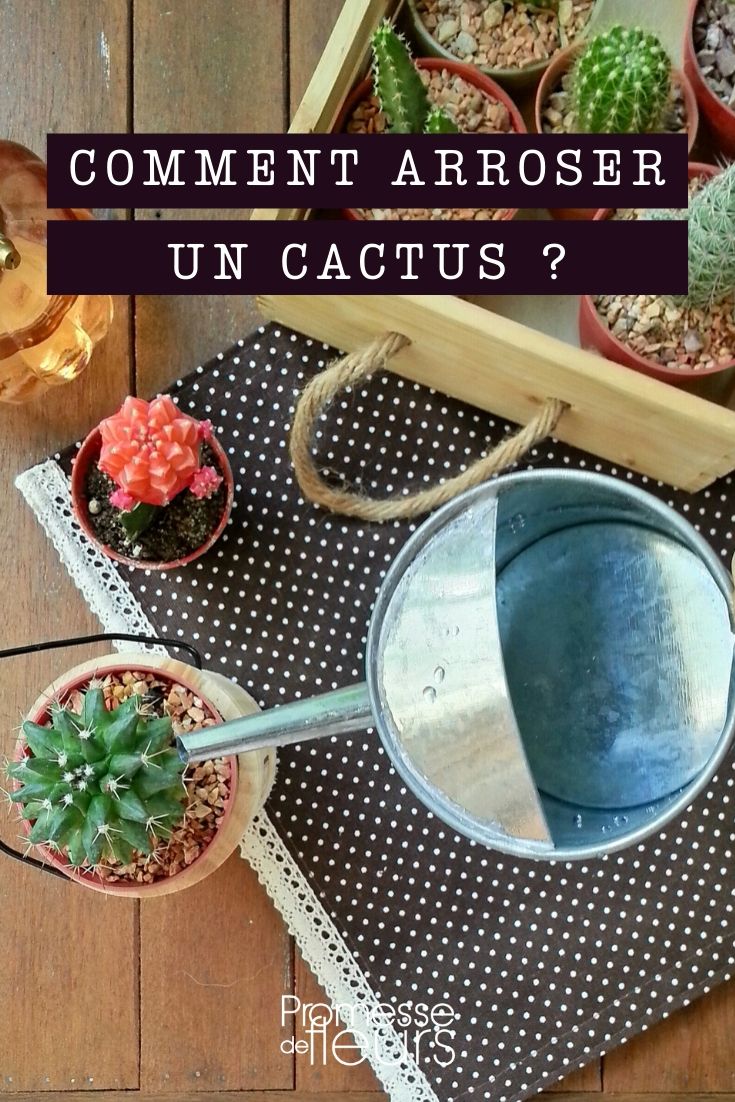




































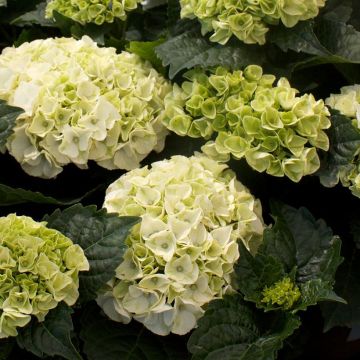




Comments